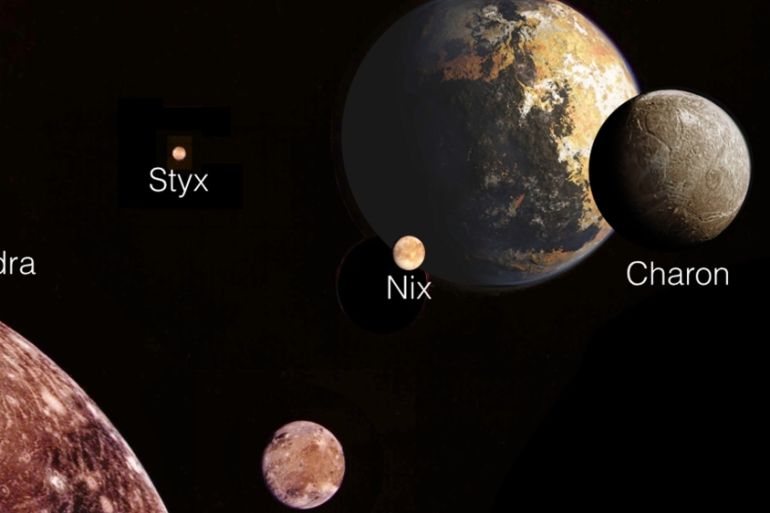Hubble research shows Pluto’s moons in continuous chaos
US study shows dwarf planet’s outer moons are constantly toppling and turning as they battle gravitational forces.

Pluto’s outer moons are continuously toppled and turned as they battle the joint gravitational forces of their parent planet and its primary moon Charon, a US study has showed.
The report, published in the journal Nature, was based on 10 years of observations of Pluto from the Hubble space telescope.
Keep reading
list of 4 itemsHong Kong’s first monkey virus case – what do we know about the B virus?
Why will low birthrate in Europe trigger ‘Staggering social change’?
The Max Planck Society must end its unconditional support for Israel
The findings should help scientists figure out how Pluto and its entourage of moons formed, and provide insight into the solar system’s origins.
“It’s as if Pluto and Charon are two weights at the end of a dumbbell, two very unbalanced weights, and that dumbbell is rotating,” astronomer Mark Showalter told reporters on a conference call.
“The four other moons are responding to the gravity fields of both objects.”
A computer simulation of Pluto’s moon Nix, based on images taken by the Hubble Space Telescope, showed the body tumbling, wobbling and flipping over.
“It’s a very strange world. You literally would not know if the sun is coming up tomorrow,” said Showalter, who works at the SETI Institute in California.
“The sun might rise in the west and set in the east or the north. If you have real estate on the north pole of Nix, you might suddenly discover one day that you’re on the south pole instead.”
Wobbly moons
NASA’s New Horizons spacecraft is due to fly within about 12,500km of Pluto on July 14.
Pluto was once considered the ninth planet in the solar system, but it was striped of that title in 2006 after astronomers discovered several similar icy bodies in the Kuiper Belt region, about 50 times farther away from the Sun than Earth.
Even before its demotion, Pluto was a planetary oddball, just 2,350km in diameter, which is smaller than the Earth’s moon, and circling the Sun in a tilted, oval-shaped orbit that occasionally reaches inside neighbour Neptune’s path.
Scientists suspect Pluto, Charon and its four small moons, all discovered in Hubble images after New Horizons launched, formed after an ancient collision of two icy bodies.
That theory will be tested with the new evidence of the tumbling, wobbly moons, and observations by New Horizons.
New Horizons, launched in January 2006, will be the first spacecraft to visit Pluto. It will then head into the Kuiper Belt for a possible flyby of a second object in 2019.